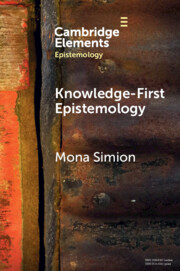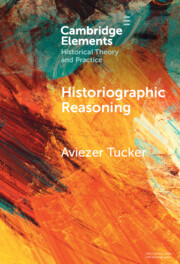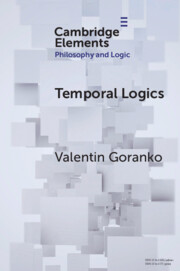Refine search
Actions for selected content:
114 results
Severity of migraine-like symptoms and its impact on executive functions in university students: a mediation model analysis
-
- Journal:
- Primary Health Care Research & Development / Volume 26 / 2025
- Published online by Cambridge University Press:
- 02 December 2025, e99
-
- Article
-
- You have access
- Open access
- HTML
- Export citation
Deliberative reason and the effect of minipublic configurations
-
- Journal:
- European Political Science Review / Volume 17 / Issue 3 / August 2025
- Published online by Cambridge University Press:
- 28 April 2025, pp. 530-540
-
- Article
-
- You have access
- Open access
- HTML
- Export citation
Social epistemology for individuals like us
-
- Journal:
- Episteme , First View
- Published online by Cambridge University Press:
- 11 April 2025, pp. 1-23
-
- Article
-
- You have access
- Open access
- HTML
- Export citation

Knowledge-First Epistemology
- A Defence
-
- Published online:
- 20 March 2025
- Print publication:
- 27 March 2025
-
- Element
-
- You have access
- Open access
- HTML
- Export citation
5 - Moral Dilemmas
- from Part I - Building Blocks
-
-
- Book:
- The Cambridge Handbook of Moral Psychology
- Published online:
- 20 February 2025
- Print publication:
- 27 February 2025, pp 101-123
-
- Chapter
- Export citation
Chapter 8 - Sperlonga and Beyond
-
-
- Book:
- Pillars of Developmental Psychology
- Published online:
- 14 February 2025
- Print publication:
- 20 February 2025, pp 79-87
-
- Chapter
- Export citation

Historiographic Reasoning
-
- Published online:
- 30 January 2025
- Print publication:
- 30 January 2025
-
- Element
- Export citation
Practical Deliberation is Normative
-
- Journal:
- Journal of the American Philosophical Association / Volume 11 / Issue 2 / June 2025
- Published online by Cambridge University Press:
- 09 January 2025, pp. 338-353
-
- Article
-
- You have access
- Open access
- HTML
- Export citation
Chapter 7 - Collingwood’s Logic of Question and Answer
- from Part II - Issues in Collingwood’s Philosophy
-
-
- Book:
- Interpreting R. G. Collingwood
- Published online:
- 22 November 2024
- Print publication:
- 05 December 2024, pp 123-142
-
- Chapter
- Export citation
5 - The Application of Logic and Reason in CIL Identification and Interpretation
- from Part II - Methods of CIL Interpretation in International Courts
-
-
- Book:
- Customary International Law and Its Interpretation by International Courts
- Published online:
- 22 November 2024
- Print publication:
- 28 November 2024, pp 105-129
-
- Chapter
-
- You have access
- Open access
- HTML
- Export citation
Feature, specification and evidence framework for communicating design rationale
-
- Journal:
- Design Science / Volume 10 / 2024
- Published online by Cambridge University Press:
- 24 October 2024, e20
-
- Article
-
- You have access
- Open access
- HTML
- Export citation
Suspension in Inquiry
-
- Journal:
- Episteme , First View
- Published online by Cambridge University Press:
- 04 June 2024, pp. 1-13
-
- Article
-
- You have access
- Open access
- HTML
- Export citation
Measuring vacillations in reasoning
-
- Journal:
- Judgment and Decision Making / Volume 19 / 2024
- Published online by Cambridge University Press:
- 16 May 2024, e15
-
- Article
-
- You have access
- Open access
- HTML
- Export citation
The Primacy of the Practical
-
- Journal:
- Canadian Journal of Philosophy / Volume 53 / Issue 4 / May 2023
- Published online by Cambridge University Press:
- 13 May 2024, pp. 301-314
-
- Article
-
- You have access
- Open access
- HTML
- Export citation
Reasoning Through Narrative
-
- Article
-
- You have access
- Open access
- HTML
- Export citation
Chapter 6 - The Pleasure of Thinking in Diverse Experiences
-
- Book:
- The Pleasure of Thinking
- Published online:
- 05 October 2023
- Print publication:
- 19 October 2023, pp 164-183
-
- Chapter
- Export citation

Temporal Logics
-
- Published online:
- 08 September 2023
- Print publication:
- 05 October 2023
-
- Element
- Export citation
Reasoning and cognitive control, fast and slow
-
- Journal:
- Judgment and Decision Making / Volume 18 / 2023
- Published online by Cambridge University Press:
- 31 August 2023, e33
-
- Article
-
- You have access
- Open access
- HTML
- Export citation

Encouraging Innovation
- Cognition, Education, and Implementation
-
- Published online:
- 17 August 2023
- Print publication:
- 31 August 2023
Chapter 13 - Plato’s Marionette
- from Part IV - Projects, Paradoxes, and Literary Registers in the Laws
-
- Book:
- How Plato Writes
- Published online:
- 27 July 2023
- Print publication:
- 17 August 2023, pp 251-274
-
- Chapter
- Export citation
